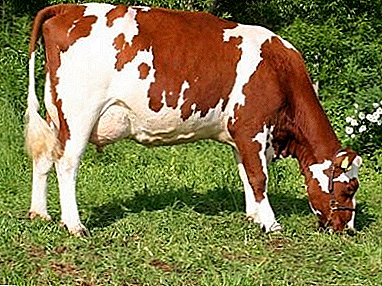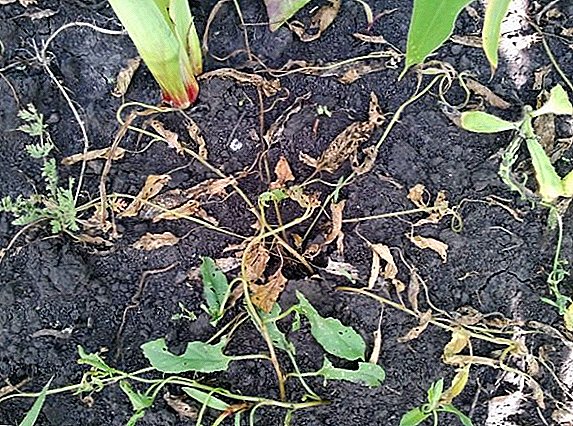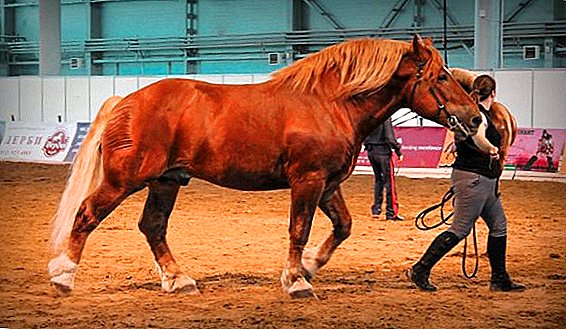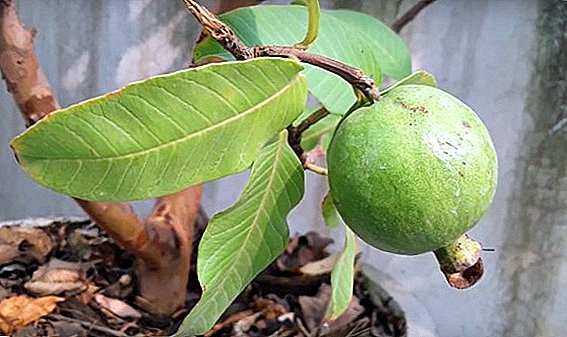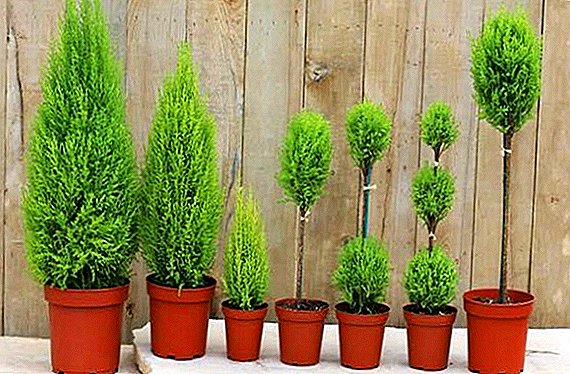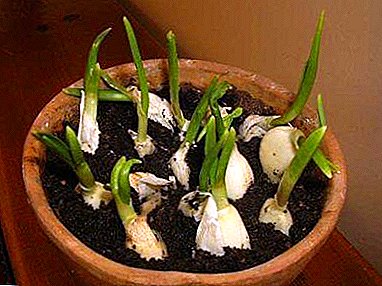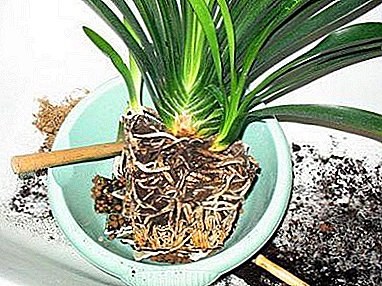
Transplant the cleavia only when necessary, when the roots begin to crawl out of the pot. Clivia refers to those flowers that are quite poorly tolerated transplant.
This process can cause rotting of the damaged roots. Therefore, without special need, the plant should not be transplanted.
If there is a need for transplantation, it is better to carry out it with caution. You can also do transshipment. Adult clivia roll over immediately after flowering, every two years. Let's deal with this procedure in detail. You can also watch a useful video on this topic.
Process features
Conditions
For Clivia, you need to provide bright diffused light, priten the plant from the direct sun.. Suitable for placement of the windows of the western and eastern exposure. At the windows of the southern exposure should provide plant shading from direct sunlight. On the north window, with a lack of lighting, clivia grows more slowly and may not bloom. The plant can spend the summer outdoors in partial shade.
- It is necessary to replant the cleavia before the rest period, which begins in September, as it is a South African plant. In the spring and summer clivia should grow at home at a temperature of 20 to 26 degrees. In October, November, the temperature was lowered to 13 - 14 degrees.
- When growing clivia at home, you should not worry about the humidity of the air, in this matter the plant is extremely unpretentious. From time to time the leaves can be cleaned with a sponge, periodically spray.
We recommend to learn more about the most beautiful clivia types: Cinnabar, Nobilis, Gardena. Description, photos and about the care of these plants, we told in our article.
Ways
- Transshipment. From the old pot, the cleavage along with the earth lump is dumped into a new, wider pot. It is necessary to gradually increase the volume of land without destroying the integrity of the soil coma.
- Transfer. How to seat in this way? The root system is completely freed from the ground and filled with new soil.
Soil preparation
 It is better to steam the store-bought earth in the oven on medium heat for half an hour, since the plant can get sick from the bacteria and bugs that live in it (the diseases and pests of Clivia are described in detail in a separate article).
It is better to steam the store-bought earth in the oven on medium heat for half an hour, since the plant can get sick from the bacteria and bugs that live in it (the diseases and pests of Clivia are described in detail in a separate article).
What is the best soil? Clivia needs a very light earth, breathing, with the addition of coal, bark. Clivia roots very thick, dense. It is necessary to check the acidity (pH = 6). If the humus is very much. Acidity is higher than normal, in order to compensate for it you can add eggshell.
It is important to use drainage during transplantation. It is perfectly suited for a mixture of turf, leaf earth and coarse sand in a ratio of 2: 2: 1. Sand can be replaced with peat and ordinary earth.
The required amount and type of fertilizer
Plant nutrition is carried out from the moment the flowers open, every 2 weeks until the end of summer. The soil must be chosen special for flowering plants or universal. Mineral fertilizers are diluted in proportion of 2 grams per 1 liter of water. When repotting is necessary to enrich the soil with phosphates. After a while add minerals or organic fertilizer.
Important: From the beginning of October until the opening of the flower, no organic and mineral replenishment should be produced. It is important not to abuse nitrogenous fertilizers. Nitrogenous fertilizers can reduce flowering by increasing leaf mass growth.
Pot
The pot should not be too big. It should fit the entire root system, as well as good drainage, a layer of several centimeters. The pot should be in diameter 2-3 cm longer than was.
Getting material for the process
There may be several reasons for seating: the flower has outgrown the dishes in which it is located, or it has just been bought and a transplant is needed. After all, the roots of the purchase option are in a special temporary substrate. Be sure to need a transplant to live and flower development. The transplanting process is the same; only for a purchased plant, the transfer method is not possible.
Clive transplant and follow-up care at home
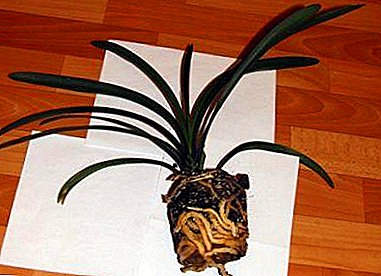 A pot with a plant must be placed in water, so that the lump with the ground is well saturated, this will make it easier to remove the clivia from the pot.
A pot with a plant must be placed in water, so that the lump with the ground is well saturated, this will make it easier to remove the clivia from the pot.- Next, clivia is separated with a knife. The knife must be taken back, not sharp side.
- Hold around the perimeter of the pot. The earth must move away from the pot.
- In order to divide the roots, they need to be washed with water.
- Roots must be carefully separated from each other in order not to cause injury.
- Separating clivia from each other, it is necessary to allow the roots to dry up, since wet plants should not be planted.
- During the transplant, you can separate the children for reproduction (about the secrets and intricacies of reproduction clivia, you can find out here). to cover up the break point with activated carbon.
- When planting on the bottom of the pot is required to lay clay, add dry manure and a little bit of soil.
- Then you need to put the plant in a pot, holding it, fill the ground.
- After this, the pot must be shaken so that all the roots will be shrouded in earth, there should be no air.
- Be sure to cut the peduncle.
- No need to water. You can moisten the leaves.
We recommend watching the clivia transplant video:
Handling clivia with subsequent care
When handling plants, you must follow a number of rules.:
- The plant must be carefully removed from the old pot.
- Pass gently into a new pot, filling up the ground, so that the roots do not break.
- Land is better to dry. No need to water immediately.
- Required to leave the plant in a place with reduced lighting for 2-3 days.
Clivia is a plant with thick, fleshy roots. At the same time they are quite easy to break. They easily rot at overflow. It is necessary to water a plant once a week. And during the rest period 1 time per month. If the top layer of soil began to crack. Then you need to water the flower. This is an excellent signal for watering. Kliviyu can not be poured.
Water from the pan should be poured. Water the flower must be separated by water at room temperature. The emergence of peduncle indicates the release of Clivia from dormancy.therefore, watering should be frequent.
When and how often should the procedure be performed?
Often, young Kliivia are transplanted every year. And adult specimens every 2-3 years. In both cases, the transplant is carried out at the end of flowering.
Possible problems: turn yellow and dry leaves
Once you have planted a plant, it may be left without leaves, they may turn yellow and dry.. There may be several reasons for this:
 If the plant has killed a small number of leaves, this may be due to natural aging, in which old leaves die to give birth to new ones. In this case, no treatment is needed. You just need to tear off the dead sheets.
If the plant has killed a small number of leaves, this may be due to natural aging, in which old leaves die to give birth to new ones. In this case, no treatment is needed. You just need to tear off the dead sheets.- If a plant has lost a lot of leaves, you may have it poured or underfilled. It is necessary to water moderately. Required to check the roots so as not to rot. If the process of decay has gone, then it is worth cutting off the spoiled roots, be sure to treat the cut point with coal. Transplant the flower in fresh soil.
- The death of leaves in large quantities can also be caused by a lack of fertilizer (top dressing). They are making bi-weekly during the flowering period.
- If the plant is moved, transferred, exposed to a draft, it may also begin to die. It is only necessary to disturb the cleavage if absolutely necessary.
Conclusion
Compliance with all the conditions of transplantation will help to grow the cleavage at home without any problems and for a long time to admire its beautiful flowers on the windowsill.


 A pot with a plant must be placed in water, so that the lump with the ground is well saturated, this will make it easier to remove the clivia from the pot.
A pot with a plant must be placed in water, so that the lump with the ground is well saturated, this will make it easier to remove the clivia from the pot. If the plant has killed a small number of leaves, this may be due to natural aging, in which old leaves die to give birth to new ones. In this case, no treatment is needed. You just need to tear off the dead sheets.
If the plant has killed a small number of leaves, this may be due to natural aging, in which old leaves die to give birth to new ones. In this case, no treatment is needed. You just need to tear off the dead sheets.